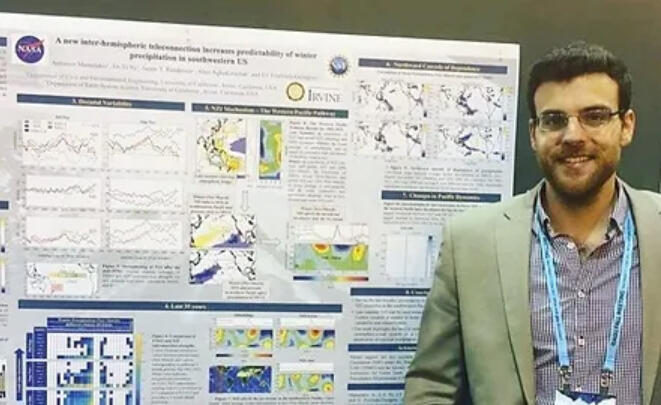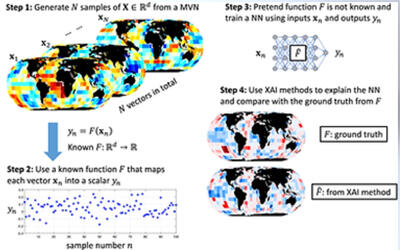
I currently work on eXplainable Artificial Intelligence (XAI) and its application to climate science.
In general, my research aims to improve understanding of how climate variability and change impact hydroclimate across scales and to assess societal risks that are associated with climatic hazards to inform adaptation and mitigation policies. My ultimate goal is to develop and use data science tools for reliable prediction and physical attribution of changes in hydroclimate and climatic extremes, towards mitigating and adapting to global environmental change. In the last decades, much progress has been made in this field, mainly stemming from more accurately and systematically monitoring Earth’s climate across scales and improving Earth System Models due to increases of computing power and physical understanding. Capitalizing on these advances, my research utilizes state of the art observations from space and land, reanalysis datasets and outputs from climate models of different complexity and uses a diverse set of approaches, including statistical and Bayesian analysis, machine/deep learning, and dynamical systems theory to pose and test hypotheses and improve predictive skill and risk assessment.
Specific research topics I have worked on include:
Data-driven exploration of sources of predictability for regional hydroclimate to improve prediction and reduce risk

Long-term impacts of climate warming to global precipitation patterns
My goal is to increase our predictive understanding and physically-attribute past and ongoing decadal frequency-magnitude changes in the global distribution of precipitation under the effect of anthropogenic forcing and/or natural multi-decadal variability. I am specifically interested in past and future shifts of the Intertropical Convergence Zone (ITCZ) and the subtropical dry zones, and changes in the statistics of extremes. Research questions also include: Which of the past hydroclimatic changes can be attributed to multi-decadal natural variability and which to external forcing? How do systematic biases of climate models, e.g., the double-ITCZ, affect our assessment about future climatic change and especially precipitation? How can we identify and account for these biases in climate change attribution? How will future precipitation changes under different socioeconomic pathways or geoengineering scenarios impact the likelihood of extreme events like floods, droughts, wild fires, heatwaves, and their likelihood to co-occur (i.e., compound events)?

Pioneering the assessment and application of explainable Artificial Intelligence (xAI) methodologies to problems of hydroclimate
As it has been shown in the recent literature, neural networks have attracted great attention in climate science because of their ability to capture nonlinear system behavior and extract predictive spatiotemporal patterns. Given their black-box nature, however, and the need of scientists to physically interpret predictions, methods of explainable artificial intelligence are gaining popularity as a means to explain the network decision-making strategy.

I envision that attribution benchmarks can be used towards establishing best practices for XAI implementation. Future research questions regarding XAI include: How to quantify uncertainty of the network explanation in a best suited way for hydroclimatic applications? Can we use XAI methods to test the fidelity of knowledge guided AI? Can we use XAI techniques to infer causality in hydroclimatic applications?
| DOWNLOAD FULL CV | GOOGLE SCHOLAR | RESEARCH GATE |
